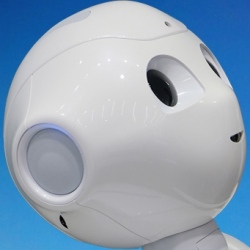
Facebook’s big announcement was to make Messenger, its 900-million-user messaging app into a full-fledged platform that allows businesses to communicate with users via chatbots. On the surface, that sounds like a standard, if very ambitious, product announcement, taking an already successful product to the next level.
But it’s a lot more than that, and it’s worth looking into the three intersecting trends rolled into this one announcement to understand why it’s a big deal, and why the the chatter around chatbots is everywhere.
The three trends:
Messaging-as-OS: Messaging can be a platform
The app problem: People are reluctant to install apps
The “conversational interface”: A new model for interacting with online services
Messaging-as-OS
If users are already spending most of their time in messaging apps, and have gotten very comfortable with how messaging works, then why not bring more and more functions right into messaging apps, rather than asking users to pogo-stick from app to app, from site to site? Go where the users already are.
Solving the app problem
Businesses want customers, and customers are mobile. The best way for a customer to interact with a business on a smartphone is generally with an app. But good apps are hard to build, and even harder to get into users’ hands. The average smartphone owner installs zero apps per month, and only uses 5-10 apps regularly. And to add to that, there are around three million apps available across the two major platforms. People don’t much like loading up their phone with apps, and are tired of trying out the latest-greatest app. So what’s a business to do if it wants to interact with its customers in a mobile world?
One of the big attractions of Messenger’s chatbot platform is the idea that customers would be able to interact with a business without downloading an app, or even without the nearly-as-awkward process of going to a website, logging in and, if needed, manually entering payment information. There’s talk of “bot stores” and the idea that there could soon be millions of different bots, just like there are now millions of apps, but they may well prove easier to build, and easier to get in front of users.
The emergence of the conversational interface
This is the the biggest and riskiest idea that Facebook is promoting, the idea that people will want to interact with businesses as if they are people, in conversational format.
You might just remember what computers were like before the advent of the GUI. Users would interact with the computer via a command line, which required memorizing a series of often cryptic commands in order to get anything done. To this day, developers tend to interact with computers in this manner, because it can be very powerful and very flexible for those who invest the effort to master the technique. But for normals, it’s an absolute show-stopper, and without the GUI, computers and the Internet would never have taken off.
One innovation that Facebook showed at F8 is called structured templates. So when you’re conversing with a bot in Messenger, it might respond to you with something more than plain text. A bot might send you an image with a few tappable options. That might just beat having to interact along the lines of a phone tree (“press one to buy shirt one, two for shirt two…”). Might. It feels like a stretch, or a partial solution that compensates for the lack of a standard graphical interface.
The real excitement around bots, though, isn’t a drive to restore computing to the glorious command line era. The promise is instead to take a bold leap into the future, in which interacting with a digital service will be more like talking to a person using natural language, the way you’d talk if you were talking to a human being.
When you put it all together, a few things become clear. First, Facebook has taken a big leap into a domain that isn’t proven. Conversational interfaces are not something that have yet succeeded in the mass market, and are not something that users are clamoring for. Yes, other messaging platforms (notably WeChat) have gotten very far by integrating many services into messaging, but not by building out bots. Instead, WeChat and similar platforms typically use the proven format of the GUI, in the familiar form of mobile websites embedded in the app.
Every so often the tech industry gets obsessed with an idea that isn’t driven by concrete user needs or problems. The conversational interface might just be one of them. On the other hand… you never know what kind of innovation will be unleashed by thousands of developers building on a platform that reaches nearly a billion people. We may just be surprised.
